A recent survey by Analysys Mason describes the current situation and plans of small and medium businesses across four countries: Germany, Singapore, the UK and the USA. The analysis focuses on the influence of the pandemic on the surveyed group of SMBs, the new and continuous challenges that the businesses face, and their prospects for the upcoming months. Why are businesses investing more money in IT? And how do they plan to make remote work safer and more productive? Find out what the trends are in the SMB segment and what you can learn from them.
1. The COVID-19 pandemic continues to impact SMBs
After its significant fall in 2020, revenues of surveyed businesses are gradually returning to their pre-pandemic level. Still, the majority of SMBs continue to face some pandemic-related challenges. Among the most prominent issues, Analysys Mason lists “worker shortages, supply chain delays and growing inflation.” Lasting influences from these factors motivate SMBs to invest in IT solutions that would assist them with sales support, employee management, manufacturing and more.
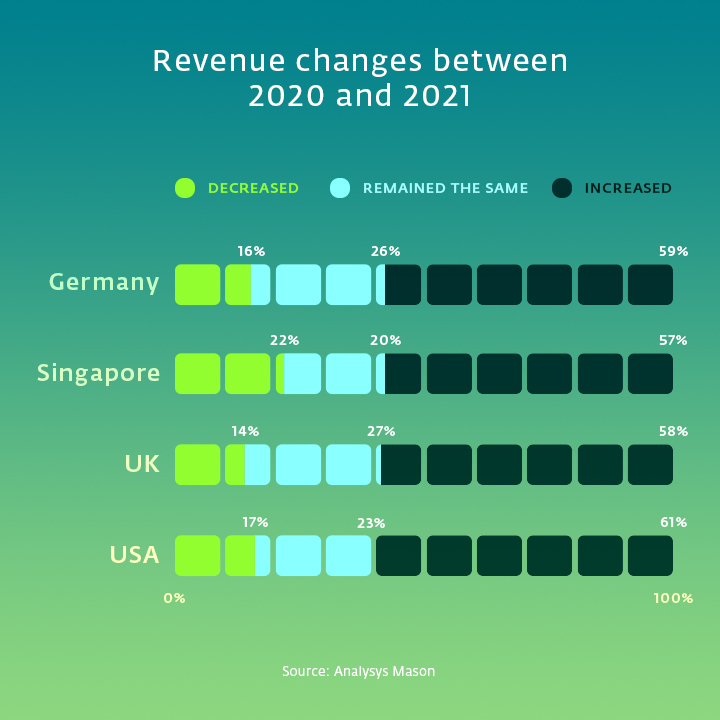
2. SMBs are focusing on expanding and hiring new employees
The surveyed SMBs exhibited an interest in future development in terms of expanding and hiring new staff. Out of the two, the latter appears to be a higher priority, yet most SMBs noted that they faced difficulties when looking for qualified new employees. This issue is likely linked to the persistent problem of the IT workforce gap, as it is becoming increasingly difficult for SMBs to attract IT talents, who often opt for jobs at larger corporations.
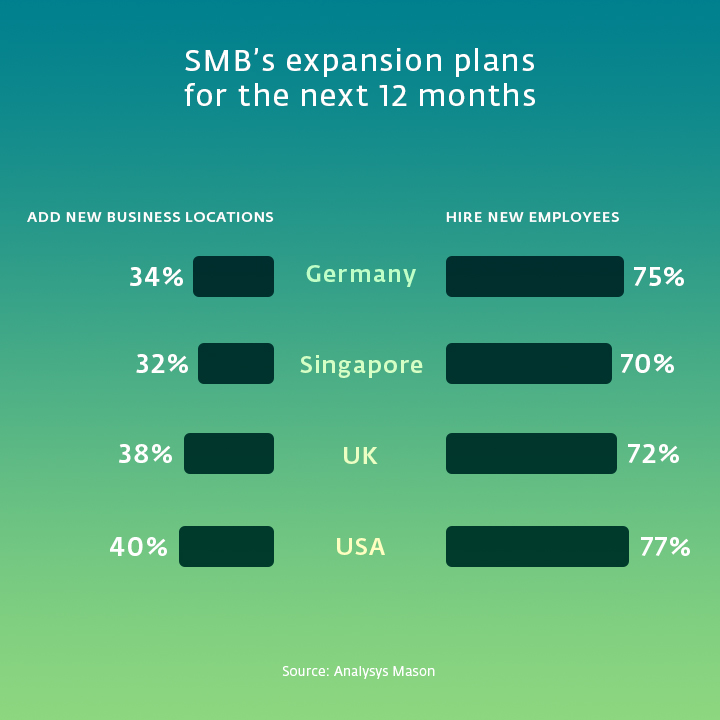
3. Remote and hybrid work is here to stay
The pandemic has forced many employees to engage in a remote or hybrid work model. While the surveyed SMBs plan for some of their workers to return to the office, businesses in all discussed countries expect that approximately 40% of their workers will continue working from home. Given the circumstances, surveyed SMBs view remote employee satisfaction as one of their primary business priorities.
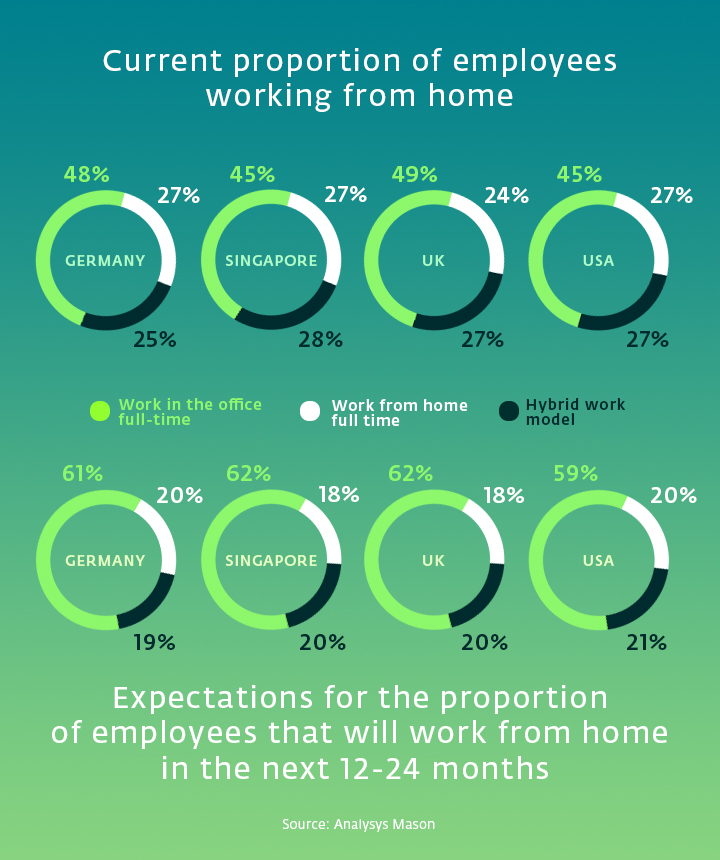
4. SMBs opted for IT measures that support remote workers
SMBs in all countries aim to enhance employees’ productivity, engagement and communication. The measures they took to reach these objectives include purchases of new work equipment, regular well-being check-ins, and digital security improvements, which encompass new security solutions and increased VPN capacity and have also included enforced security training.
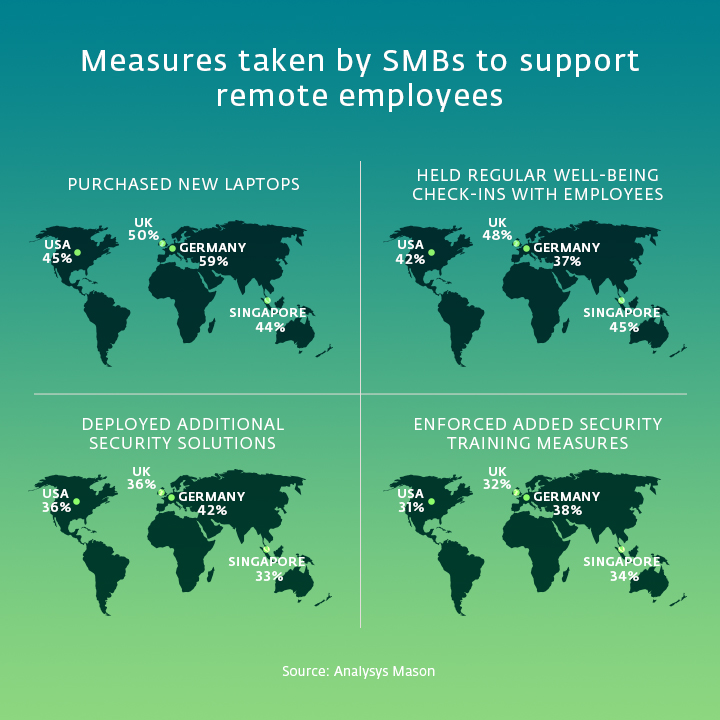
5. SMBs’ future technology priorities should benefit both remote and hybrid work
Since remote and hybrid work is expected to remain common across the surveyed businesses, SMBs plan to focus on improving their productivity and connectivity. Apart from that, other SMBs plan to continue replacing desktops with laptops and tablets – this matter is no longer as urgent as it was in 2020. SMBs hope to increase their ability to deal with work-related issues remotely, which is why they plan to provide remote IT support to their employees. Moving a business to the cloud is also one standard practice. About 22% of businesses plan to adopt cloud infrastructure, and approximately 19% of businesses want to employ cloud-based SaaS (software-as-a-service).
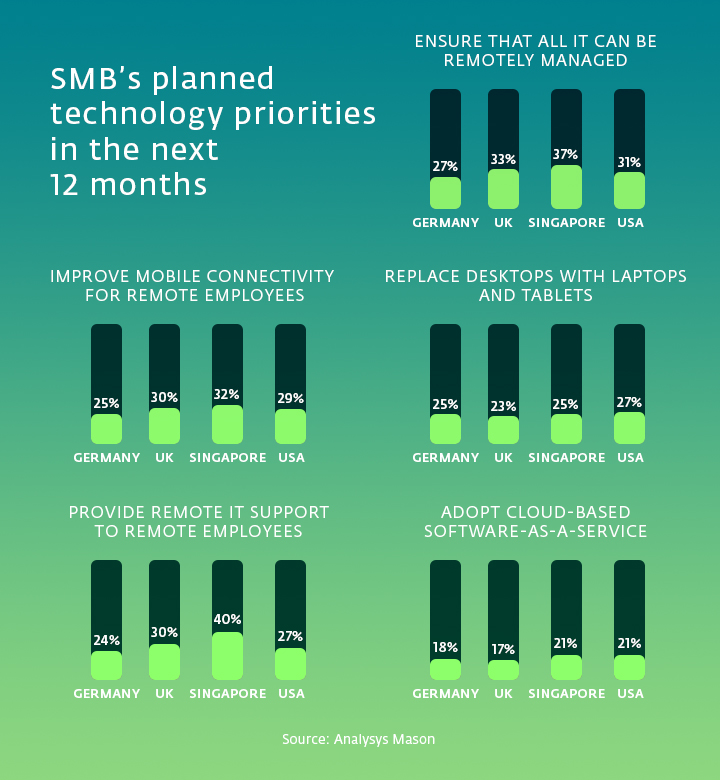
Read more: Taking Your Business to the Cloud: Why Should the Cloud Become Part of Your IT Infrastructure?
6. Most of the surveyed SMBs use a managed IT service
Those SMBs who have yet to employ a managed IT service plan to invest in this area in the upcoming months. The most significant growth of these investments is expected in the US (51%), while the lowest – yet still substantial – growth is planned by SMBs in Singapore (39%). Businesses currently operating without any managed IT service will likely search for managed storage, backup and recovery, managed security, mobile device management and managed PC services.
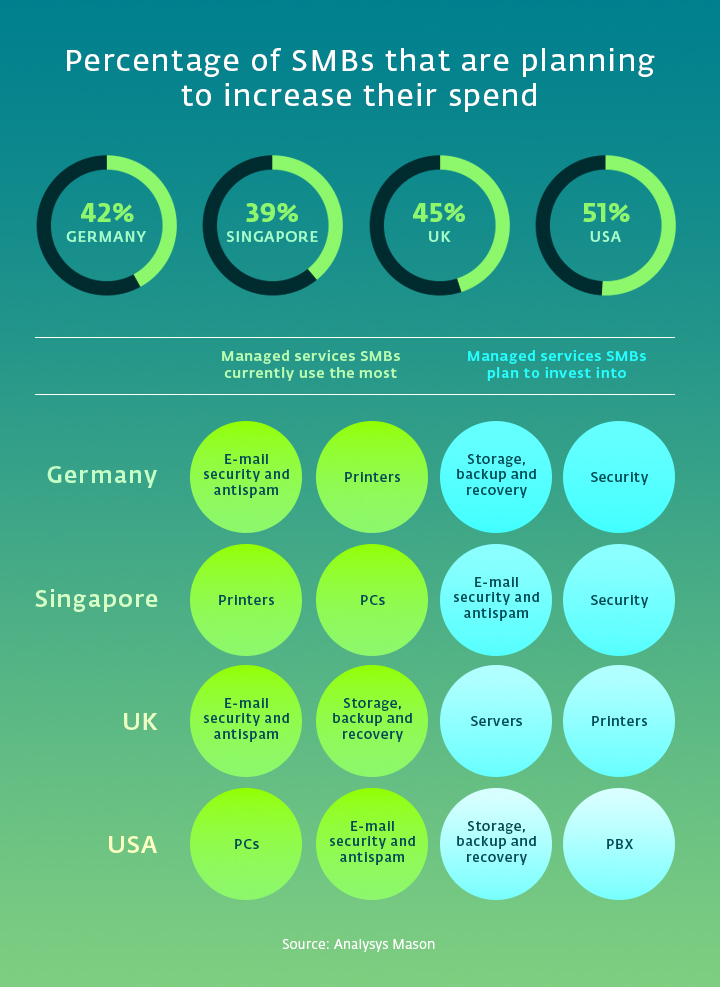
7. Over 70% of surveyed SMBs plan to increase their investments in IT
The previously discussed findings suggest that the pandemic motivated the examined businesses to invest in IT. Most SMBs plan to continue increasing their IT budgets; a decrease is expected only at approximately 2% of businesses across the four surveyed countries. Further, the percentage of annual revenue invested in IT should continue to increase by roughly 0.45%. According to the predictions, the surveyed SMBs will invest approximately 4.93% of their revenue into IT.
Cybersecurity spending by SMBs should rise from $57 billion in 2020 to $90 billion in 2025. Regarding spending by the security solution category, managed security services are expected to have the most significant share and will account for 33% of SMB cybersecurity spending in 2025.
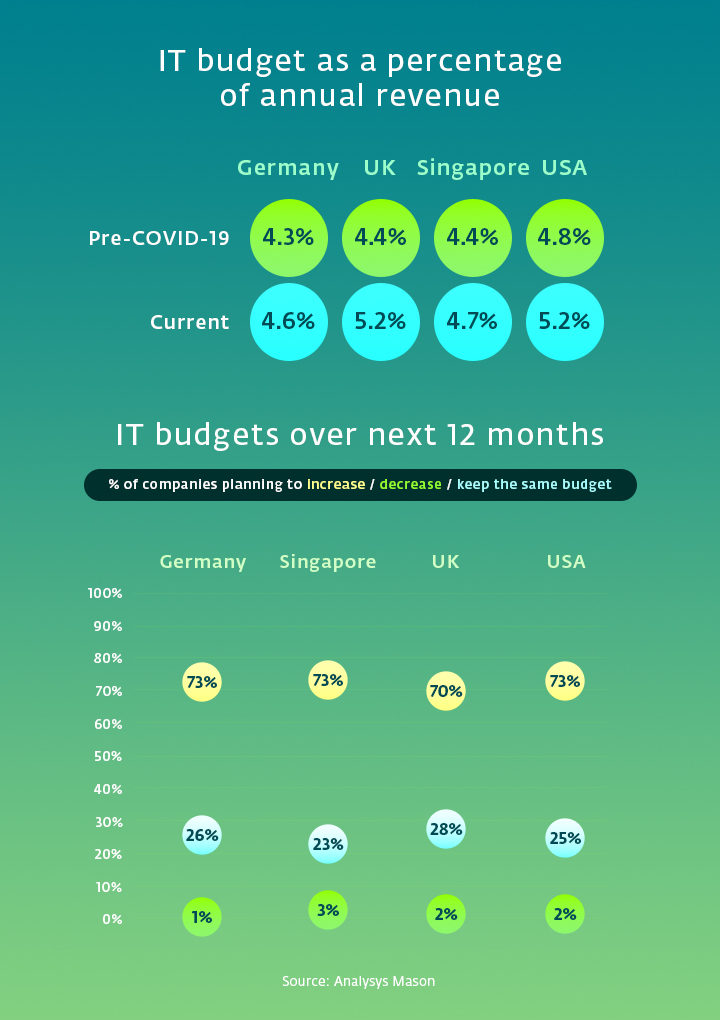
Read more: How to Get a Budget for Cybersecurity: Get Inspired by the Experts’ Approach
8. Most SMBs perceive their future optimistically
Even in the uncertain times of the pandemic, most surveyed SMBs have expressed their belief in a successful business future. According to the Analysys Mason survey,
medium-sized businesses in the US are the most optimistic. In contrast, small companies demonstrated the lowest level of sanguinity in the UK, which also had to deal with the consequences of Brexit and the rapid increase in energy costs.
Based on the Analysys Mason survey results, we can observe that most SMBs are planning to increase their cybersecurity spending. It is no surprise, as we can witness the rise of cybersecurity threats yearly. But even with the increased budget, there are still challenges to overcome, such as a shortage of qualified workers or the need to adapt technologies that allow for a hybrid work model, which continues to be a trend. With that model, there is a need for securing remote infrastructure and building awareness between employees, who can be the weakest or strongest links when it comes to cybersecurity.

